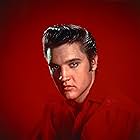What could be more relevant to today's East/West dialogue than a film that brings together both politicians and musicians to help add clarity and understanding to one of the most significant historical upheavals of modern times? FREE TO ROCK is that film and is the long-awaited result of a decade long quest. Knitting together a musical/pictorial mosaic of archival source material, this film sheds further light upon the pivotal role American rock music played as a soft power accessory in helping to escalate, if not promulgate social change throughout Cold War, Communist-dominated Eastern Europe. Other cinematic attempts have been made with a more limited scope; see ROCKIN' THE WALL, 2010; HOW THE BEATLES ROCKED THE KREMLIN, 2009. But with noted filmmaker Jim Brown's valuable contribution, we now have the most up-to-date and comprehensive cinematic assessment. The film is significantly enriched by archival and rare footage as well as recent interviews with the likes of Jimmy Carter and Mikhail Gorbachev. Indeed, the spirit of Marshall McLuhan hovers throughout the course of this one hour journey. For this reviewer it is nothing less than a meditation on McLuhan's thought-provoking concept of a "global embrace;" one of his futuristic ideas that humanity will more and more be transformed through the heightened availability of images and sounds. As indeed this film carefully traces the accumulation of masses congregating in isolation in major cities all throughout the former Eastern Bloc and that especially includes Moscow, Riga, Kiev, Budapest, and ultimately East Berlin. The point is increasingly hammered home that music was demonstrably the most significant factor in helping sway so many solitary individuals into full participatory engagement. FREE TO ROCK provides the most salient and convincing argument to-date that it was most likely the soft-power role of rock music, both in idea and in substance that more than any other factor helped usher in Cold War Europe's surprisingly peaceful collapse.
















